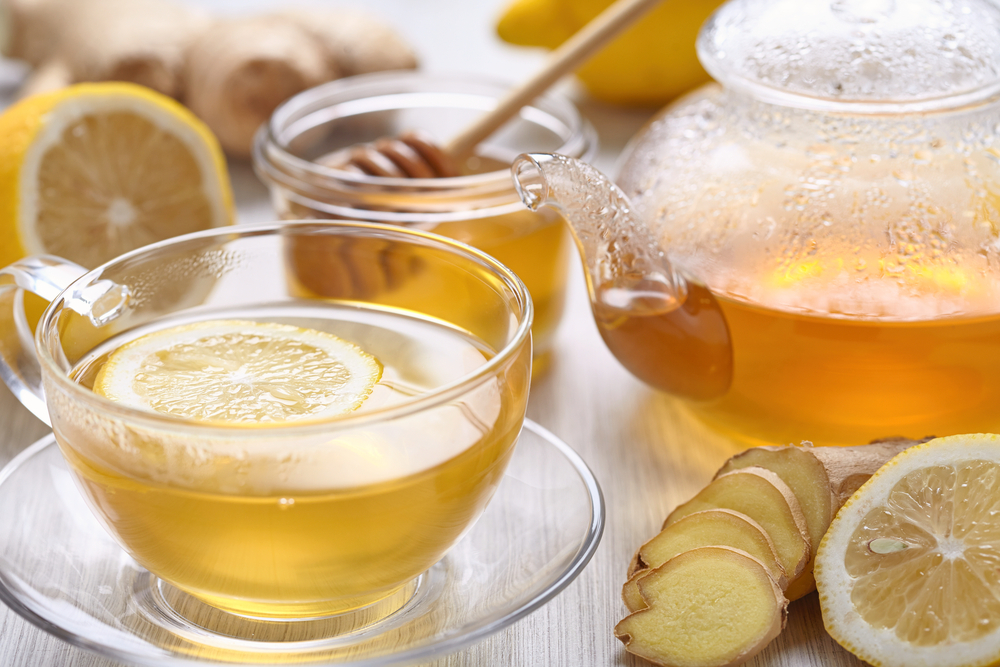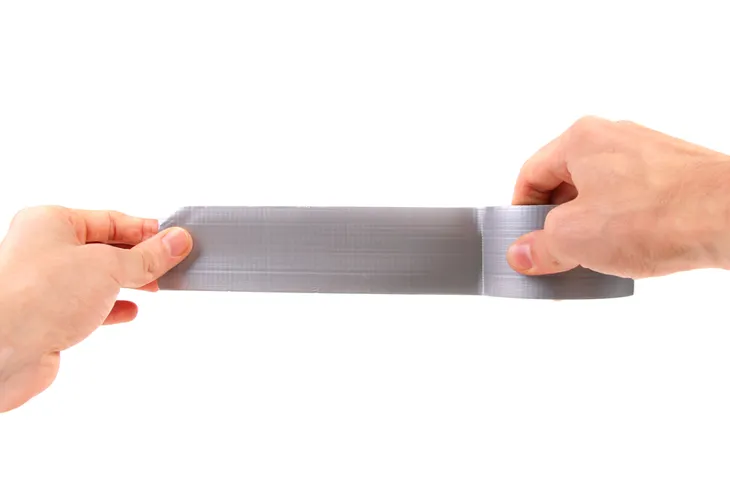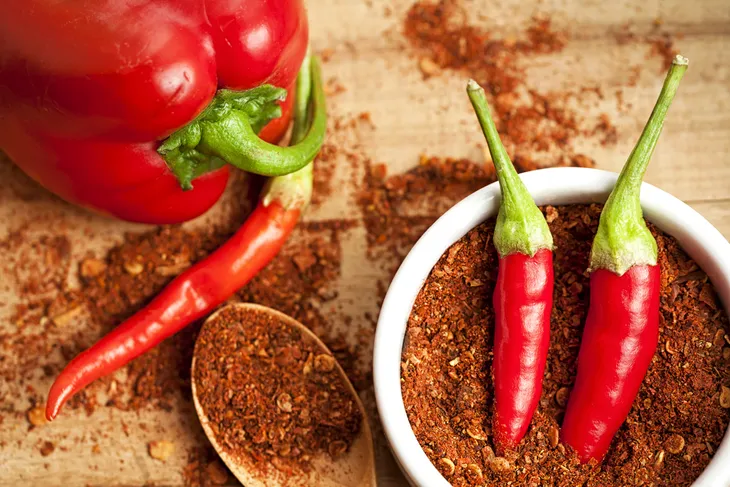From mouthwash on blisters to soaking in an oatmeal bath for the dreaded chicken pox these remedies aren’t a 100-percent cure for any illness, but they can help relieve a lot of those uncomfortable symptoms and in some cases clear them up entirely. We understand that there’s a lot of remedies out there and not all of them work, but there are a few that do! These remedies have been tried and tested and won our stamp of approval.
An added bonus? They all include things you could probably already find in your home! Here’s a look at some of the best home remedies every parent should know…
1. Honey for a Sore Throat
There’s nothing worse than a sore throat. It hurts, it’s uncomfortable, and when it’s our child who’s suffering it’s even worse. Luckily, there are several things we can do at home to soothe a sore throat. Reader’s Digest suggests giving a child a spoonful of honey before bed to ease their cough. However it’s important to note that this remedy cannot be used on infants. Babies under the age of 1 cannot digest and if they do it will make them sick. Only try this trick on children over the age of 1.
Adults can benefits from this trick too! I like to add some honey into my tea in the morning to help soothe a sore throat. Between the honey and the warm liquid gives me some much needed relief.
2. Garlic
Garlic has been used throughout the ages for its antimicrobial properties. There have been numbers experiments which have found that garlic has the ability to combat microoganisms that cause common and rare infections, including the common cold. Healthline refers to a 2011 study that found “garlic concentrate is effective against bacteria.” So how do we use garlic? You can purchase garlic concentrate or extract at any local health food store, or make your own by soaking garlic cloves in olive oil. In the case of a sinus infection, garlic steeped in soup is often used to open the respiratory passages and bring down fever.
It’s important to note that while garlic is safe to ingest, it can be dangerous if consumed in large doses. Limit yourself and anyone else to only two cloves per day. If you’re taking a supplement, follow the dosage directions on the bottle. Also, if you’re taking blood thinning medication, consult with a doctor before using garlic as an antibiotic.
3. Duct Tape for Wart Removal
We agree, this one sounds made up, but trust us — it’s real! WebMD writes that a new study has found duct tape can be just as effective as those liquid nitrogen treatments that tend to leave children squirming. “The use of duct tape appears promising as a safe and nonthreatening treatment for children,” writes lead author Dean R. Focht III, MD, a pediatric researcher with the Madigan Army Medical Center in tacoma, Washington. No, it’s not the chemical adhesive that hastens wart removal—it’s actually the occlusion (or suffocation) itself that causes the body’s immune cells to become irritated, attack, and break down warts.
Focht had a study of his published in the Archives of Pediatrics and Adolescent Medicine which examined the effects of duct tape versus cryotherapy. The results of his study found that “duct tape won over cryotherapy; 85-percent of the duct tape patients were wart-free, compared with 60-percent of the cryotherapy group,” writes WebMD.
4. Oatmeal for Chickenpox
The chickenpox are nothing to get excited about as they cause an itchy, scratchy rash all over the body. This rash later turns into fluid-filled blisters and then scabs. Most of us were afflicted with the chickenpox as kids. It’s hard to forget those 100 itches that couldn’t be scratched. One of the best remedies for chickenpox is an oatmeal bath. “This soothing treatment uses colloidal oatmeal that’s ground into a fine powder so it will mix with the bathwater and not all sink to the bottom,” writes Healthline.
Still not convinced? No problem. This remedy has the science to back it up. Healthine refers to several studies from 2015, 2012, and even back in 2007 which found that colloidal oats have antioxidant and anti-inflammatory properties. “Colloidal oats can moisturize skin as well as act as an emollient to improve dry skin. They also have high levels of starch to work as an agent that soothes and protects skin.”
To get the best effects from this remedy, Healthline suggests having your child sit in the oatmeal bath for about 10-minutes. Depending on their age, you can also scoop up and dribble the milky oatmeal water over areas of their body that are not under water. The source also warns that the mixture of oats in the tub can create a slippery mixture, so be careful as they walk in and out of the tub. When you’re all done in the bath, rinse it off, then use a soft towel to dab the skin dry.
5. Yogurt for Halitosis
There’s nothing worse than bad breath, and let’s face it, our kids sometimes have it! While there are plenty of options to help cure bad breath like fresh mints and mouthwash, a new study finds that yogurt might also be an option to fend off odors! The probiotics it contains can soothe an irritated digestive system while also banishing bad breath. This is thanks to the neutralizing powers that squash the digestive acids that travel between the mouth and the stomach.
Research found that “eating 6-ounces of yogurt a day reduced levels of odor-causing compounds, such as hydrogen sulfide, in the mouth,” writes WebMD. “They say the results suggest that the active bacteria in yogurt, specifically Streptococcus thermophilus and Lactobacillus bulgaricus, may have a beneficial effect on odor-causing bacteria in the mouth.”
6. Oil for Cradle Cap
While many parents worry when their newborns develop cradle cap, it’s a pretty common skin condition that is not harmful to the child and can often be cured with some at-home remedies. Cradle cap is sometimes referred to as seborrheic dermatitis, and according to Parents, it affects about 10-percent of babies up to 1-month and 70-percent by the time they are 3-months-old. However, as they get older and are about 1 to 2-years-old, it only affects about 7-percent.
One of the easiest methods to cure cradle cap is to rub some oil onto the scaly patches on their scalp. You can do this before putting them in the bath and use either coconut oil, baby oil, or olive oil. “Gently massage the oil into the area that has the flakey, scaly skin of cradle cap,” says Clare Bush, MD, a paediatrician at ColumbiaDoctors and Assistant Professor of Pediatrics at Columbia University Medical Center to Parents. Then let it sit for a few minutes in order to loosen the flaky pieces of skin. While in the tub, use a soft brush or dry washcloth to rub the affected area. This will get rid of the scales. The source goes on to advise using a hypoallergenic shampoo to wash away the oil. Again, allow the shampoo to sit for a few minutes so that it can soak up all the oil and then rinse with warm water. Afterwards, pat their hair with a towel and use a towel or brush to remove anymore of the loose scales. Be careful not to use too much oil otherwise it will be difficult to wash out.
7. Sugar for Hiccups
Mary Poppins might have been onto something when she sang, “a teaspoon of sugar helps the medicine go down!” Sugar can be used in a medicinal way to help treat the hiccups! Best Health magazine recommends swallowing a teaspoon of sugar to stifle those annoying hiccups. You can also try using a tablespoon of peanut butter or a teaspoon of honey. “The sticky sweetness may change the rhythm of your breathing, which calms the vagus nerve,” writes the source. If the hiccups don’t eventually stop, go see a doctor.
8. Turmeric for Colds
Turmeric is becoming more and more popular as of lately, not only for it’s amazing ability to spice up a dish in the kitchen, but also because it boasts some pretty awesome health benefits. This pungent golden spice was often used in India in a glass of warm water or milk to banish a cold and to lessen mucus nasal discharge. Healthline refers to a test-tube study published in the BioMed Research International journal which found that curcumin, a property of turmeric, has antibacterial, antiviral, and antifungal properties which make it great for fighting against infections. However, it’s important to note that there aren’t yet any studies that have found similar effects on humans.
Turmeric is also loaded with many antioxidants which means it has the ability to boost our immune system. This could give someone that extra push their body needs to help prevent infectison and fight off other infections like the common cold. You can easily add turmeric to any meal or in a simple tea.
9. Foods That Can Ease Car Sickness
We’ve all been there before…as the car starts rolling our stomach churns, our mouth fills with saliva, and all you can focus is on is how not to get sick. There’s nothing worse than struggling with car sickness. It’s something a lot of people suffer from. Aside from a few tips like not eating before getting in a car, scanning the horizon and catching some shut eye on the road, there are also a few foods that can help quell the symptoms of sickness. Prevention lists ginger, olives and lemons, and soda crackers as some of the best that are worth trying.
Ginger is one remedy that isn’t just folklore. This one has been backed by science! An experiment found two powdered ginger root capsules to be more effective than a dose of Dramamine when it came to preventing motion sickness. You can also try sucking on a lemon or eating a few olives beforehand. “Motion sickness causes you to produce excess saliva, which can make you nauseated, some doctors say. Olives produce a chemical called tannins, which make your mouth dry,” writes the source. A lemon will have the same effect. The tanginess of the lemon will help dry up your mouth.
Lastly, soda crackers are something we’ve all tried to eat when feeling ill, whether it’s to make us feel better or because they were the only thing we could stomach. Well, Prevention notes that soda crackers won’t stop salvation like olives or lemons, but they might soak up the excess fluid in the stomach.
10. Mouthwash for Blisters
Sure, you want a family with fresh breath freshener, but when it comes to painful blisters, the antiseptic powers of mouthwash can dry them out and speed the healing process. Just apply using a cotton pad twice a day!
11. Cayenne Pepper for Nosebleeds
This remedy seems like it would just make you sneeze, but it’s actually quite soothing! Cayenne pepper works to help the blood clot and has actually been used for medicinal purposes in culture around the world for a long time, says paediatrician Lillian Beard, MD, author of Salt in Your Sock and Other Tried-and-True Home Remedies when talking to Parents. To use this remedy, tilt your child head slightly forward (never tilt their head back during a nosebleed as this will cause the blood to flow back down the throat and into their stomach), pinch the top of their nose and the nostrils together for several minutes to try and stop the bleeding. Then sprinkle a pinch of cayenne pepper on the end of a Q-tip and dab it on the inside of the nose.
12. Baking Soda on Bug Bites
Unfortunately, bug bites are an aspect of summer that we all just have to accept. They aren’t going anywhere and as much as we can try to avoid them or limit our exposure to them, we all get bit from the time to time. Most bug bites cause us to itchy and scratch and even result in a little bit of inflammation or pain. While there are lots of over-the-counter treatments like after bite that can help soothe and relieve the symptoms, there isn’t much else we can do. Luckily, we’ve got a great remedy to try and it works on adults and kids. You can easily make a paste that can be applied to the skin by mixing baking soda and water. Healthline suggests mixing 1-tablespoon of baking soda with a little big of water, then applying it to the bug bite for about 10-minutes before washing it away. Repeat the process until you’ve got some relief, but if you find the baking soda is irritating the skin even more, stop the treatment.














